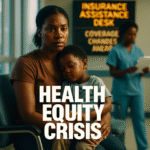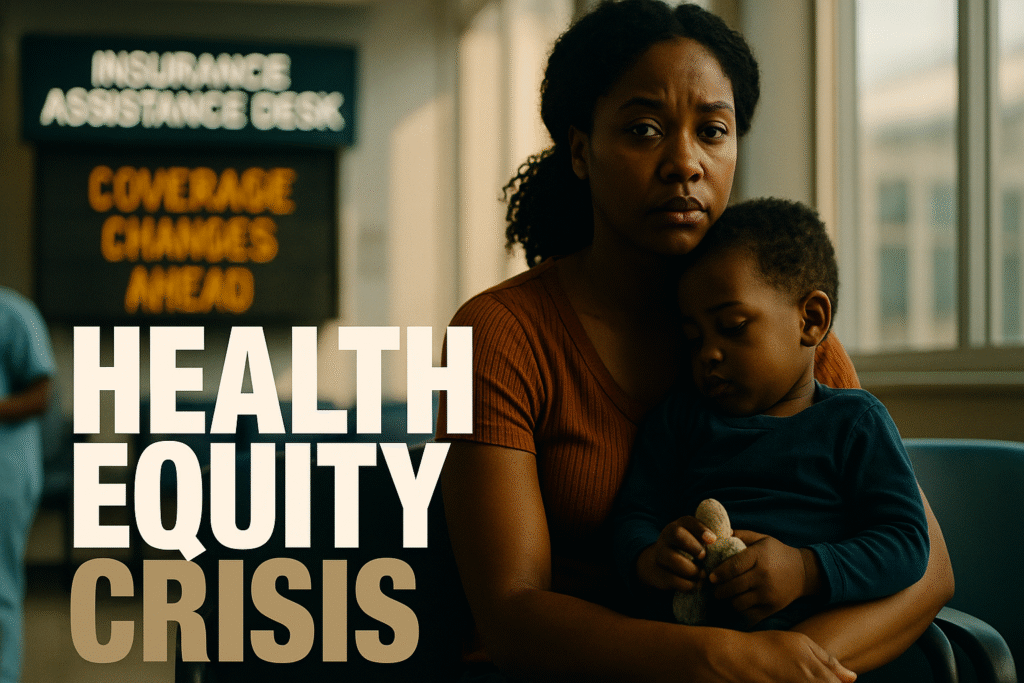

How Ending Enhanced Premium Tax Credits Sparks a Racial Health Care Crisis
By Darius Spearman (africanelements)
Support African Elements at patreon.com/africanelements and hear recent news in a single playlist. Additionally, you can gain early access to ad-free video content.
The History Behind The Headlines
Introduction: Health Care Policy Changes and Racial Equity Concerns
Today, civil-rights groups, including the NAACP, National Urban League, and the National Council of Negro Women, joined Protect Our Care and several members of Congress in a national press call to criticize recent federal actions they describe as producing a Republican-led “health care crisis.” These groups highlighted three concrete problems: sharp premium increases if enhanced premium tax credits expire; the loss of subsidies for middle- and lower-income households; and growing racial disparities in access to care. In addition, advocates pointed to federal budget rollbacks and regulatory changes that reduce program funding and compound harms for Black and Brown communities. (See Associated Press for Urban League and civil-rights statements: Associated Press.)
Timeline: Policy context for marketplace subsidies
Consequently, this article breaks down the story into four key components: the immediate news, the policy mechanisms at work, the historical context that connects policy choices to racial health disparities, and why this matters for Black and diaspora communities now and in the future. I anchor each claim to public analyses and reporting by policy researchers and national outlets, so the stakes are clear. (See KFF analysis on premium impacts: Kaiser Family Foundation.)
Detailed Analysis of the Current News Story: Premiums, Tax Credits, and Advocacy
Advocates held a national press call to emphasize that policy choices over the following weeks will determine whether tens of millions of people can keep their affordable insurance. In addition, they linked recent congressional budget rollbacks and regulatory actions to immediate consequences: insurers are filing higher 2026 rates due to subsidy uncertainty; families will face significant premium spikes if enhanced premium tax credits (EPTCs) expire; and community health providers anticipate more uncompensated care. For example, KFF shows that if EPTCs end, the average marketplace enrollee’s share of premiums would rise sharply — on average, more than doubling — and about 22 million people currently receiving subsidies would be affected (KFF). (See KFF for detailed estimates: KFF.)
Moreover, national outlets report that EPTC uncertainty has already altered insurer behavior, with planned rate increases and narrower networks being described in filings and press coverage. Advocates argue that the policy decisions are not abstract. They offered real examples of families who will be forced to trade care for rent or food if marketplace subsidies vanish. The Associated Press and CNBC documented these claims and insurer projections in recent coverage. (See AP for advocacy coverage: Associated Press; see CNBC for insurer and rate context: CNBC.)
Historical Context: How Past Policy Choices Shaped the Current Crisis
ACA-era subsidies were designed to make private marketplace insurance affordable. Over time, Congress and the administration have adjusted those subsidies during emergencies and economic disruption. In response to the pandemic, lawmakers expanded premium tax credits, resulting in a significant increase in enrollment and improved affordability for many households of color. Additionally, Medicaid expansion in many states has narrowed gaps in coverage for lower-income populations. Yet the design of those programs left structural vulnerabilities—political fights can alter funding with enormous practical consequences.
Consequently, when lawmakers allowed or planned to end expanded credits, equity gains reversed quickly in projections. Policy analysts from urban research institutes and health-policy centers documented that gains in coverage for Black and Latino people were disproportionately tied to these expanded subsidies. Thus, expiration threatens to widen pre-existing health disparities shaped by long-standing structural exclusion from care. For empirical context, see KFF’s enrollment and premium work and Commonwealth Fund modeling of economic impacts. (See Commonwealth Fund: Commonwealth Fund.)
Why This Matters Today: The Direct Impact on Black and Brown Communities
Advocates emphasize that the policy choices are life-impacting and immediate. First, a large share of American families of color rely on marketplace subsidies to keep coverage affordable. If subsidies expire, many will face premiums they cannot afford and will delay care. Second, community health centers and hospitals that serve a high share of Black and Latino patients will face revenue losses and increased uncompensated care. This will strain access in neighborhoods that already face provider shortages.
Consequently, the effects of racial health equity are clear. Restoring or extending subsidy programs reduces disparities. Conversely, letting expansions lapse deepens them. That is why groups such as the NAACP, National Urban League, National Council of Negro Women, and Protect Our Care are organizing press calls and public actions now. Their goal is to pressure lawmakers to include subsidy extensions in funding deals and to spotlight how budget rollbacks disproportionately harm Black and Brown people. (See Associated Press and Reuters coverage of advocacy and CBO/analyst estimates for context: AP; Reuters.)
Conclusion: How Policymakers and Communities Should Respond to This Health Care Crisis
Moving forward, community leaders and policymakers face a clear choice: either extend affordability programs to preserve recent coverage gains or allow those programs to lapse, thereby accepting large increases in uninsured rates and growing health disparities. Advocates are pushing for codification of expanded subsidies in funding negotiations and for targeted policies to protect communities of color. Meanwhile, health providers and local governments are preparing for increased strain on community health infrastructure.
Therefore, for Black and diaspora communities, the stakes are immediate. Scheduling, outreach, and political pressure matter now because insurer rate-setting and plan design for 2026 have already begun. In addition, the economic impacts on jobs and local healthcare capacity will cascade if subsidies are ended. Advocates will continue to hold press calls and public events to make these points visible and urgent to lawmakers. (For economic modeling and local impacts, see Commonwealth Fund and Urban Institute analyses: Commonwealth Fund.)
ABOUT THE AUTHOR
Darius Spearman has been a professor of Black Studies at San Diego City College since 2007. He is the author of several books, including Between The Color Lines: A History of African Americans on the California Frontier Through 1890. You can visit Darius online at africanelements.org.
